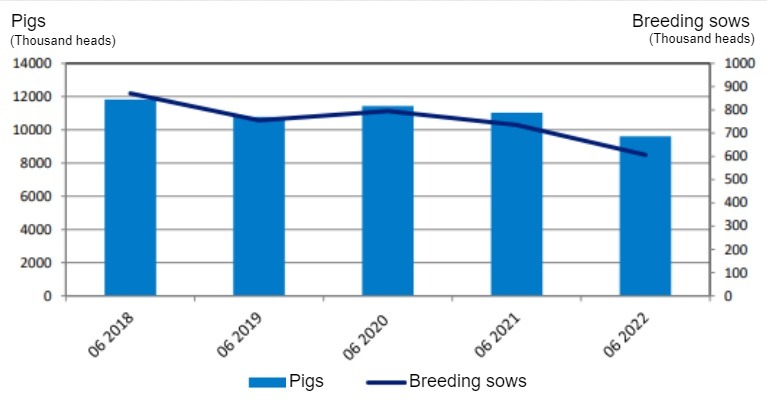At the beginning of June 2022, the pig inventory stood at 9.61 million head, down by 1.42 million head (-12.9%) from the same period last year. Compared to December 2021, pig population decreased by 631.2 thousand head (-6.2%).
The breeding sow herd decreased by 128.8 thousand head (-17.5%) to 606.4 thousand head compared to June 2021, and the herd of pregnant sows was down 89.3 thousand head (-17.6%) to 417.6 thousand head.

In January-June 2022 (according to preliminary data), imports of live pigs totaled 3.23 million head and were 5.4% lower than in the same period last year, of which imports of piglets decreased by 6%, and pure-bred breeding pigs and sows decreased by 38.2%. The average weight per imported head during the period was 35.4 kg compared to 32.7 kg in 2021.

Evolution of the Polish pig inventory. Source: GUS.
The largest shares in the domestic pig inventory were hed by the following provinces: Greater Poland (35.6%), Masovian (12.7%), Łódź (9.4%) and Kuyavian-Pomeranian (9.3%). The following provinces had the smallest shares: Podkarpackie (0.8%), Lubuskie (0.9%) and Małopolskie (1.0%).
The state of emergency of African swine fever (ASF) disease still persists. In the first half of 2022, the Chief Veterinary Inspectorate registered 5 outbreaks in pigs, affecting 2,286 animals.
September 2022/ GUS/ Poland www.stat.gov.pl









